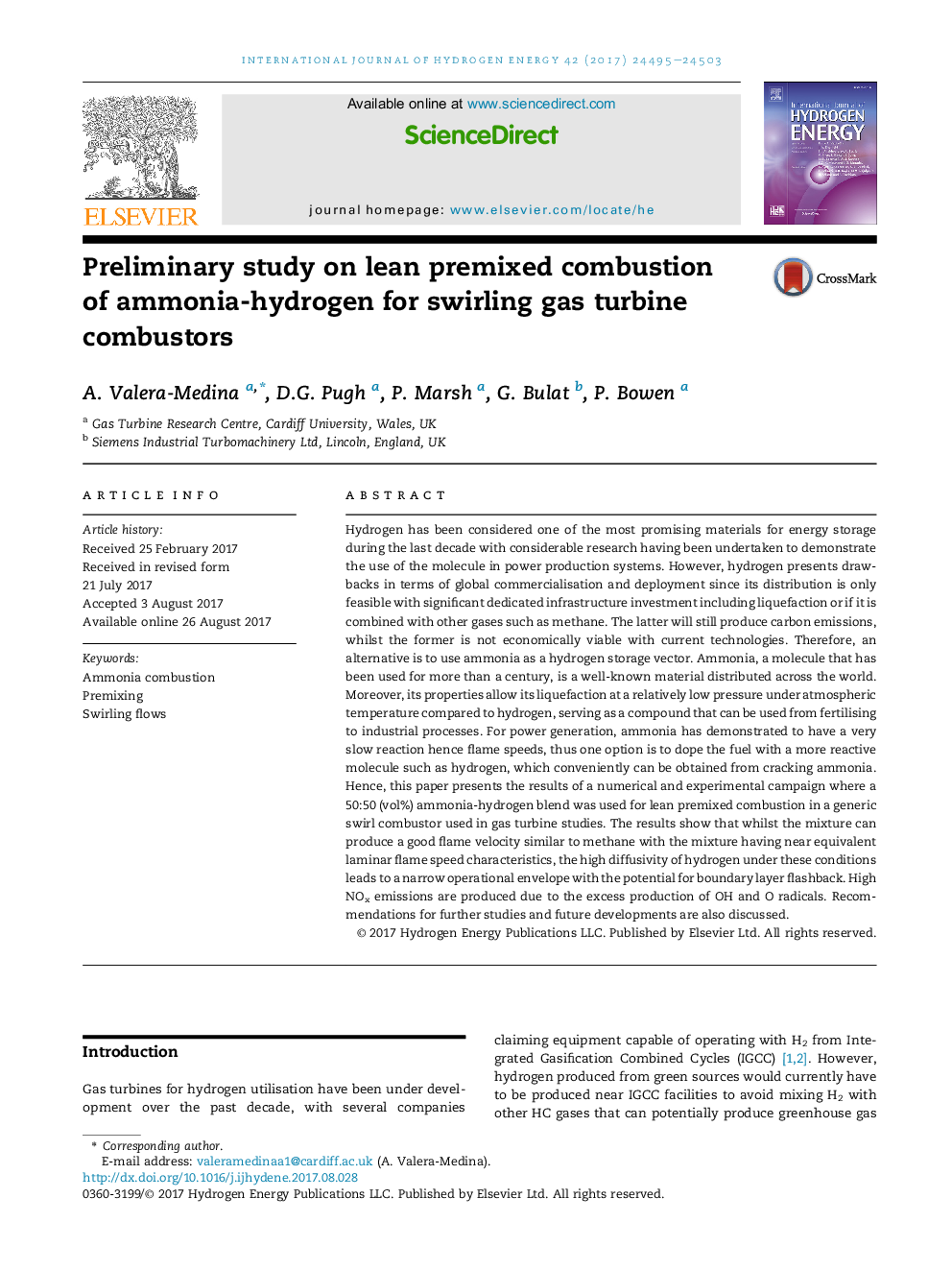| Article ID | Journal | Published Year | Pages | File Type |
|---|---|---|---|---|
| 5145236 | International Journal of Hydrogen Energy | 2017 | 9 Pages |
Abstract
Hydrogen has been considered one of the most promising materials for energy storage during the last decade with considerable research having been undertaken to demonstrate the use of the molecule in power production systems. However, hydrogen presents drawbacks in terms of global commercialisation and deployment since its distribution is only feasible with significant dedicated infrastructure investment including liquefaction or if it is combined with other gases such as methane. The latter will still produce carbon emissions, whilst the former is not economically viable with current technologies. Therefore, an alternative is to use ammonia as a hydrogen storage vector. Ammonia, a molecule that has been used for more than a century, is a well-known material distributed across the world. Moreover, its properties allow its liquefaction at a relatively low pressure under atmospheric temperature compared to hydrogen, serving as a compound that can be used from fertilising to industrial processes. For power generation, ammonia has demonstrated to have a very slow reaction hence flame speeds, thus one option is to dope the fuel with a more reactive molecule such as hydrogen, which conveniently can be obtained from cracking ammonia. Hence, this paper presents the results of a numerical and experimental campaign where a 50:50 (vol%) ammonia-hydrogen blend was used for lean premixed combustion in a generic swirl combustor used in gas turbine studies. The results show that whilst the mixture can produce a good flame velocity similar to methane with the mixture having near equivalent laminar flame speed characteristics, the high diffusivity of hydrogen under these conditions leads to a narrow operational envelope with the potential for boundary layer flashback. High NOx emissions are produced due to the excess production of OH and O radicals. Recommendations for further studies and future developments are also discussed.
Related Topics
Physical Sciences and Engineering
Chemistry
Electrochemistry
Authors
A. Valera-Medina, D.G. Pugh, P. Marsh, G. Bulat, P. Bowen,
